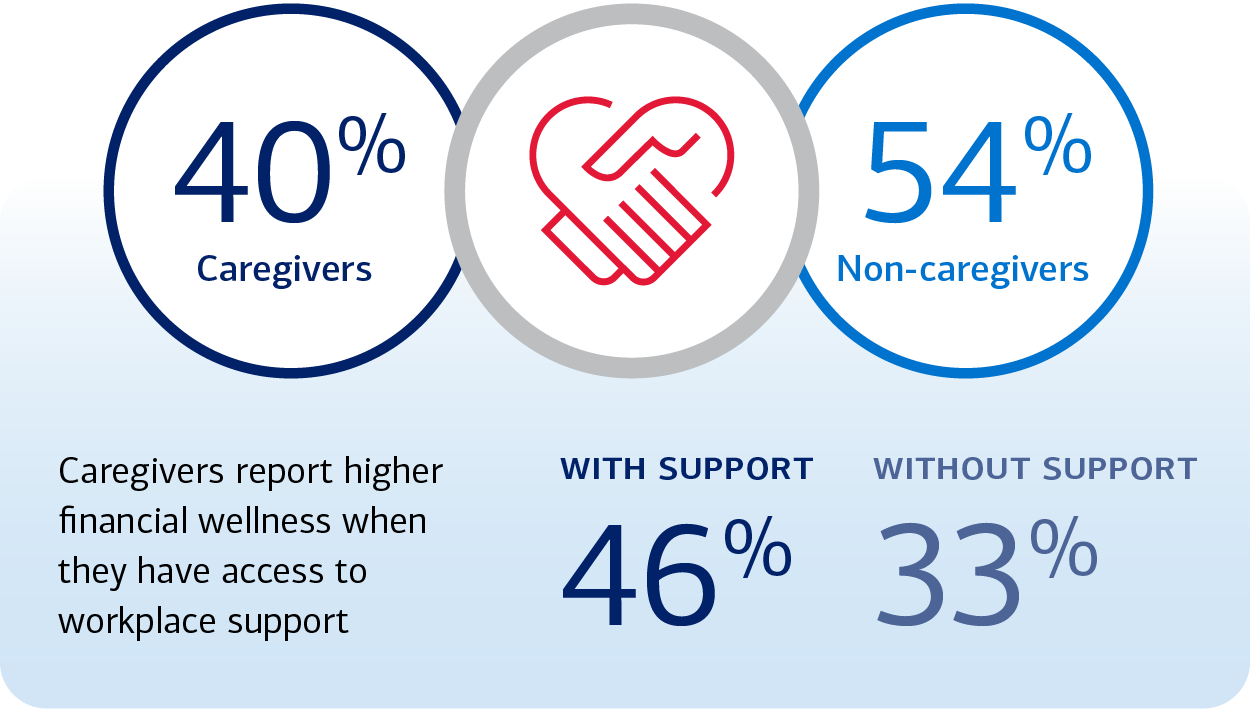
December 2024
MATTERS THAT MATTER
Create a culture where caregivers can thrive
Balancing work responsibilities with the demands of caregiving creates challenges on caregivers’ time, mental health and personal finances, and could prevent them from reaching their full potential. More than half of employees (52%)1 identify as caregivers, so it’s not surprising that offering them greater support has surfaced as a top priority for employers.
Caregivers report a lower financial wellness rating than non-caregivers1

Research shows that employees who are likely to earn the least are also likely to spend the most on care-related expenses, with the average monthly cost totaling $485.2 In addition to this considerable financial strain, caregiving also impacts their overall health. The Employee Benefits Research Institute (EBRI) reports that both mental and physical health decline with:
And as working caregivers shift time and attention between their careers and trying to meet their caregiving responsibilities, their work productivity, presenteeism and career advancement can suffer.
39% used vacation time to care for a loved one2
16% reduced their work hours2
11% left the workforce altogether2
9% turned down a promotion2
Enhancing communications and expanding benefits offerings for working caregivers can help them balance responsibilities at home and at work with greater confidence. Employers can help this substantial segment of their workforce to feel supported by taking key actions.
Actions for employers to consider
Foster a culture of care from the bottom up by offering or enhancing workplace benefits programs, such as:
- Leaves of absence and sick days to be used for caregiving.
- Flexible scheduling and remote work options.
- Employee assistance programs, such as counseling and support groups.
- Communications that increase awareness of available resources and reduce the stigma of caregiving at work.
- Access to professionals who can provide legal guidance and/or coordinate appropriate living facilities.
1 Bank of America 2024 Workplace Benefits Report.
2 Bank of America 2023 Workplace Benefits Report.
3 EBRI, Caregivers and Retirement: Findings from the 2023 Retirement Confidence Survey, July 2023.

